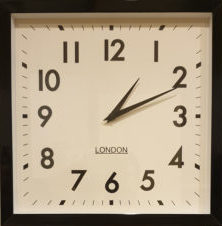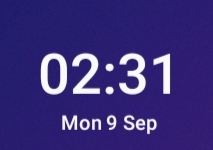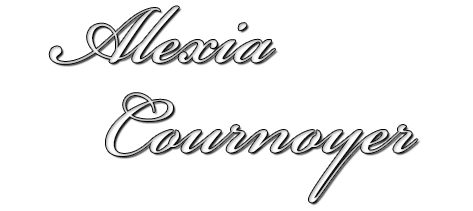
The passing of clocks as we know them
In 2018 it was reported that schools in the UK were replacing analogue clocks with digital clocks in their exam rooms as students struggle to tell the time using a clock face. For those of us of a certain age, it’s a lol wut? kind of moment but if you look around you can see how it’s happened, without us really noticing digital has supplanted the timepiece. When you check the time at home, it’s probably via your phone, pc or even your TV – always displayed digitally and very rarely a stand-alone clock or watch. In public spaces, clocks on buildings have all but vanished from towns and cities and have been since towards the end of last century. Where they remain, they’re usually not maintained by their owners so either no longer display the correct time or have stopped. As the old adage says, at least those stopped clocks are right twice a day but soon that saying will become redundant as it will make no sense to people don’t remember the analogue clock.
So here’s a potted history of the clock.
The first clocks were created in China around the 7th century and the first known striking clock made outside China was in Syria in the 12th century. The idea soon spread to Europe where these clocks had no face, they were solely used for bell ringing and calling the faithful to prayer. During this time smaller clocks and watches were being developed and they were a little different to what we know today, they had one hand and it was the dial, rather than the hand, that rotated. Yep, you read it right, only one hand and the dial rotated. Also back in the day, the need for exact timekeeping wasn’t necessary, so knowing the time within 30 minutes was more than acceptable, along with the fact they weren’t 100% reliable at timekeeping.
By the late 14th century, the clock face had been further refined and it was the hand rather than the dial that moved. Around this time churches began to install them with a clock face in their towers. The Italians in the 14th and 15th centuries were particularly enthusiastic and went a little overboard with their clock towers as they installed 24 hr striking clocks, although in northern Europe and England, 12 hour clocks became the norm. Unless you were the Greenwich Observatory – there’s always one, isn’t there?

Although 24 hour displays are no longer fashionable for clocks and watches, that mode of timekeeping is still used by the military but my guess is that like the rest of us, they’ve gone digital and do you blame them? Just looking at the crowded clock face and trying to decipher the numerals made my mind cringe. For the record, the clock in the picture is showing 3pm (15hrs). Midnight is at the top and noon is where 6pm would normally be.
With the invention of the pendulum in the late 17th century, clocks became more reliable and minute hands were incorporated in the design but until the late 18th century, most public clocks were still one handed. I bet you’ve never even noticed the ones that are left, like the ones in the Westminster Abbey tower. Included with the south-east tower when the towers were added in the 18th century, the tower has a single handed clock face on 3 sides. The half hour is marked with the small diamond shape and the time in the picture is approx 4.35pm.

Built in the 17th century and with a clock face of 16 foot 6 inches/5 metres in diameter, a hand that is almost 9 Feet/2.75 metres long and still wound by hand, some say the Saint Michael’s Church at Coningsby in Lincolnshire is the largest single handed clock face in the world, claiming the time can be read from up to 2 miles away. It’s well and truly eclipsed in size by at least 40 two handed clocks from around the world but it does appear to be the largest single handed clock face in the world.


These one handed clocks were the norm until around the 18th century when two handed clocks began to replace them and during the French Revolution there was an attempt to refine timekeeping by making it decimal. The decimal clock had 10 hours in a day, 100 minutes in an hour and 100 seconds in a minute.

During the 19th century there was a sustained period of church restoration and building in the UK and a lot of the single handed clocks were replaced during these ‘restorations’ with the two handed clocks we’re now used to. By the end of the 19th century the clock face that we know today was dominant both in the home and in public spaces, usually with two hands but by the mid 20th century sometimes with three – the thin third hand would mark the seconds. In 500 years we went from close enough is good enough, to needing to know just precisely how many seconds there were when we calculated our timekeeping.
Now of course we’re digital. Digital displays may be easier and quicker to read but are quite lacking the charm of a dial. To add insult to injury to us horologists (people who like clocks), even watches are passing out of favour as most people (particularly the young) check their phones when they want to tell the time. Although this could be just be because they want any excuse to look at their phones but still, there’s nothing discreet about pulling out a smartphone to see what time it is, at least with a watch you can hide your briefly distracted attention.

Whether we like it or not, clocks as we know them are going the way of horse and buggies. Eventually the skill of reading a clock will only reside with some historians and obsessives but that doesn’t mean we have to let them go silently into the night.
So repeat after me, ‘The big hand is on the …’
Further reading
Schools removing analogue clocks

